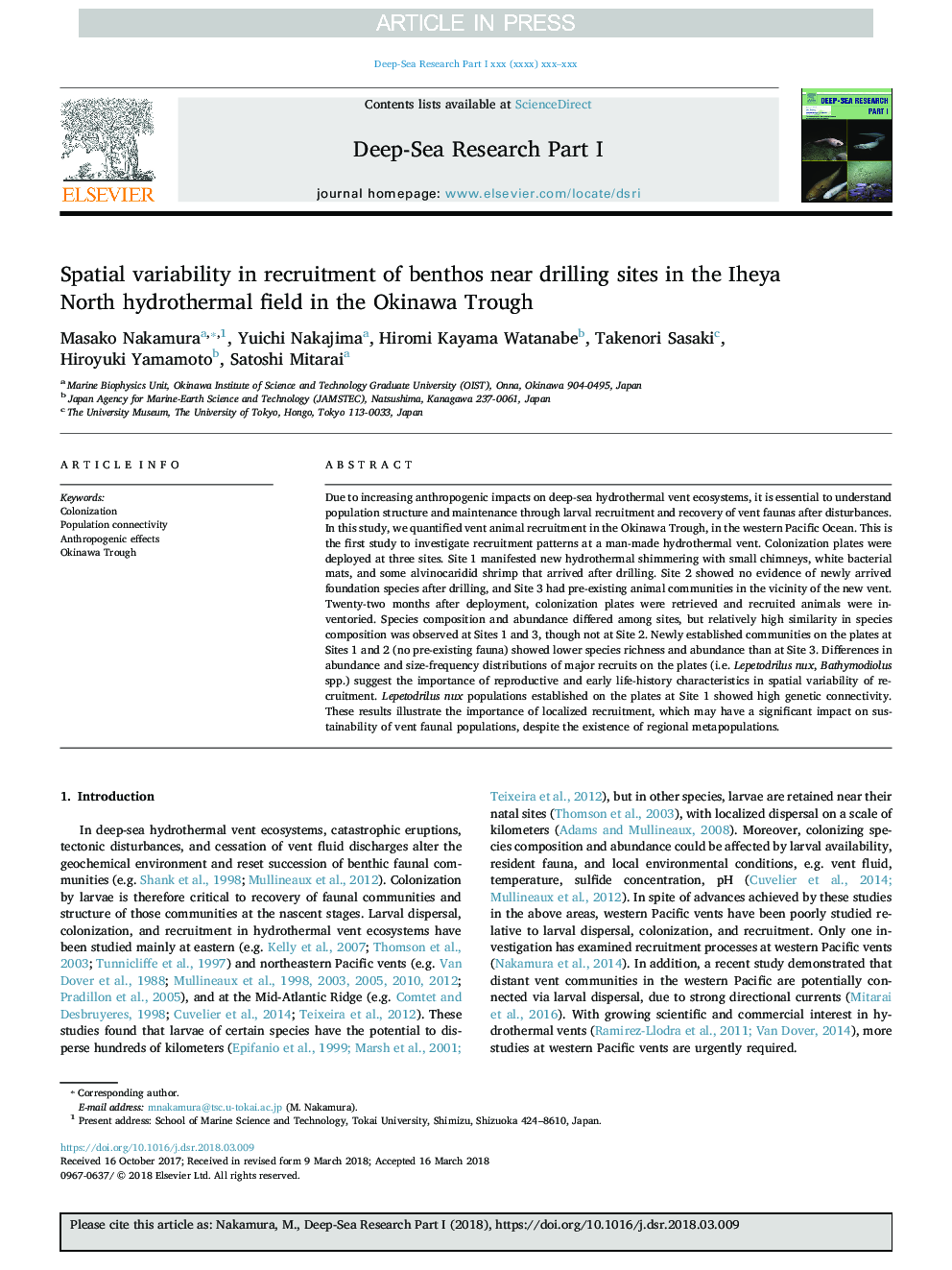| Article ID | Journal | Published Year | Pages | File Type |
|---|---|---|---|---|
| 8884240 | Deep Sea Research Part I: Oceanographic Research Papers | 2018 | 9 Pages |
Abstract
Due to increasing anthropogenic impacts on deep-sea hydrothermal vent ecosystems, it is essential to understand population structure and maintenance through larval recruitment and recovery of vent faunas after disturbances. In this study, we quantified vent animal recruitment in the Okinawa Trough, in the western Pacific Ocean. This is the first study to investigate recruitment patterns at a man-made hydrothermal vent. Colonization plates were deployed at three sites. Site 1 manifested new hydrothermal shimmering with small chimneys, white bacterial mats, and some alvinocaridid shrimp that arrived after drilling. Site 2 showed no evidence of newly arrived foundation species after drilling, and Site 3 had pre-existing animal communities in the vicinity of the new vent. Twenty-two months after deployment, colonization plates were retrieved and recruited animals were inventoried. Species composition and abundance differed among sites, but relatively high similarity in species composition was observed at Sites 1 and 3, though not at Site 2. Newly established communities on the plates at Sites 1 and 2 (no pre-existing fauna) showed lower species richness and abundance than at Site 3. Differences in abundance and size-frequency distributions of major recruits on the plates (i.e. Lepetodrilus nux, Bathymodiolus spp.) suggest the importance of reproductive and early life-history characteristics in spatial variability of recruitment. Lepetodrilus nux populations established on the plates at Site 1 showed high genetic connectivity. These results illustrate the importance of localized recruitment, which may have a significant impact on sustainability of vent faunal populations, despite the existence of regional metapopulations.
Related Topics
Physical Sciences and Engineering
Earth and Planetary Sciences
Geology
Authors
Masako Nakamura, Yuichi Nakajima, Hiromi Kayama Watanabe, Takenori Sasaki, Hiroyuki Yamamoto, Satoshi Mitarai,
